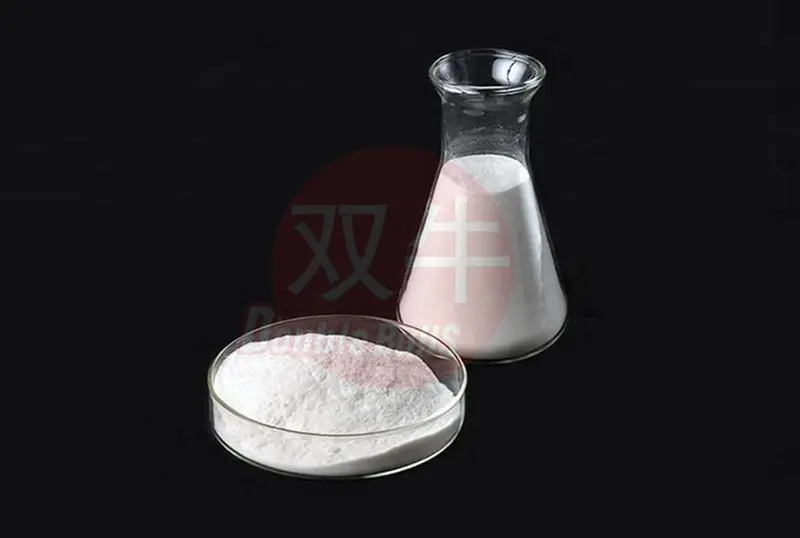cellulose ether(such as sodium carboxymethyl cellulose (CMC), hydroxyethyl cellulose (HEC), etc.) as functional additives in detergent can improve the decontamination ability and foam stability by adjusting the rheological properties of the system, enhancing the interface effect and cooperating with other components. The specific functions and mechanisms are as follows:
1、 Improvement effect and mechanism of decontamination ability
The core of dishwashing detergent is to reduce the interfacial tension between oil stains and tableware surfaces through surfactants such as sodium dodecylbenzenesulfonate (LAS) and fatty alcohol polyoxyethylene ether (AEO), allowing the oil stains to emulsify, disperse, and be washed away with water. Cellulose ether enhances this process through the following methods:
Thickening and retention effects, prolonging the cleaning time
Cellulose ether molecular chains bind with water molecules through hydrogen bonds, forming a viscous network structure that increases the viscosity of detergent solutions (usually controlled at 1000~3000 mPa · s). This viscosity can:
Extend the retention time of dishwashing detergent on the surface of tableware (reduce rapid loss due to gravity), allowing surfactants more sufficient time to penetrate oil stains and damage oil films;
Enhance the solution's ability to wrap around oil stains and prevent emulsified oil stains from reattaching to tableware (i.e. "secondary pollution").
For example, when cleaning dishes with heavy oil stains, dishwashers containing CMC can form a continuous wetting layer on the surface of the oil due to their moderate viscosity, resulting in a 15% to 20% increase in cleaning efficiency compared to systems without cellulose ether.
Dispersion and suspension function to prevent oil pollution from accumulating
The hydrophilic groups on the cellulose ether molecular chain (such as carboxyl COO ⁻, hydroxyl OH) can adsorb on the surface of emulsified oil droplets, forming charged or steric hindrance barriers:
Charged functional groups (such as - COO ⁻ of CMC) generate electrostatic repulsion between oil droplets, avoiding aggregation;
The steric hindrance of long-chain molecules further prevents oil droplets from merging, allowing the emulsified oil to be stably dispersed in the aqueous solution and removed with washing.
This function is particularly important for removing heavy oil stains in the kitchen, such as animal fat and fried residues, which can reduce the phenomenon of "repeated wiping still leaving oil stains".
Synergistic enhancement with surfactants
cellulose etherThe molecular chains of can bind with surfactant molecules through hydrophobic interactions, forming "surfactant polymer" composite micelles, which have stronger solubilization ability for oil stains than single surfactant micelles:
The hydrophobic core of composite micelles is larger, which can encapsulate more oil molecules;
The presence of cellulose ether can also increase the adsorption capacity of surfactants at the oil-water interface, enhance the effect of reducing interfacial tension, and accelerate oil stripping.
2、 Improvement of foam stability and its mechanism
The foam of detergent not only affects the user experience (consumers usually think that foam is rich=decontamination is strong), but more importantly, the stable foam can be used as the "oil carrier" - foam film can contain oil and reduce its sedimentation. Cellulose ether stabilizes foam through the following mechanisms:
Enhance the mechanical strength of foam film
Foam is composed of a film (liquid film) wrapped with air formed by surfactant molecules arranged at the gas-liquid interface. The stability of the liquid film determines the life of foam. Cellulose ether molecular chains can adsorb on the surface of the liquid film and strengthen the film through the following methods:
The entanglement and hydrogen bonding between molecular chains make the liquid film more tough, enhance its ability to resist external disturbances such as stirring and collision, and reduce liquid film rupture;
The high viscosity of cellulose ether reduces the loss rate of water in the liquid film (delaying the "liquid discharge" process), and prolongs the existence time of foam.
Contrast: The detergent foam without cellulose ether usually bursts in 1~2 minutes, while the half-life of foam can be extended to 5~8 minutes with the addition of 0.2%~0.5% HEC.
Adjust foam structure to reduce coarse bubbles
cellulose etherThe thickening effect of can control the merging of bubbles: in low viscosity systems, small bubbles are prone to collide and merge into coarse bubbles (poor stability, easy to float and burst); However, the viscous environment formed by cellulose ether will reduce the movement rate of bubbles, making foam more compact and uniform, and improving the overall stability.
Anti hard water interference, maintain foam stability
Tap water (especially northern hard water) contains metal ions such as Ca ²+, Mg ²+, which is easy to combine with surfactants (such as LAS) to form insoluble salts and destroy foam film. The carboxyl group of cellulose ether (such as CMC) can preferentially combine with metal ions (chelation) to reduce its consumption of surfactant and indirectly maintain the formation and stability of foam.
3、 Precautions in practical applications
Usage control
The amount of cellulose ether added should be moderate (usually 0.1%~0.8%):
Low dosage: Insufficient thickening and foam stabilization effects;
Too high dosage: the solution viscosity is too high, and the foam is too viscous, which will affect the washability (foam is not easy to clean), and may increase production costs.
Type Selection
Carboxymethyl cellulose sodium (CMC): cost-effective, with thickening, dispersion, and certain chelating ability, suitable for mid to low end dishwashing detergents;
Hydroxyethyl cellulose (HEC): It has better salt and temperature resistance, excellent compatibility with surfactants, longer foam stability, and is suitable for hard water resistant formulations.
Compatibility with other components
Dishwashing detergent often contains enzyme preparations (such as protease, lipase), preservatives, etc. Please pay attention to:
Cellulose ethers (especially CMC) may precipitate with high valence metal ions (such as Fe ³ ⁺), and the pH of the system needs to be controlled (usually neutral to weakly alkaline);
Avoid mixing with strong oxidants to prevent the breakage of cellulose ether molecular chains and loss of function.
summary
Cellulose ether in detergent can enhance decontamination ability through thickening and retention, dispersion and suspension, and cooperating with surfactant. At the same time, it can improve the stability of foam by strengthening the strength of foam film, delaying drainage, and controlling bubbles. Its essence is to optimize the rheological properties and interface behavior of detergent by using the hydrophilicity of molecular chain, long chain structure and synergistic effect with other ingredients, which not only improves the actual decontamination efficiency, but also meets the consumer's demand for "rich and lasting foam" experience. In formula design, it is necessary to select the appropriate type and dosage of cellulose ether based on cost, water quality, and performance requirements to achieve optimal results.


TEL:+86 (0311) 8444 9786
Email:sales@double-bulls.com
Email:Export@double-bulls.com
Address:No.9 Weisi Road, Jinzhou City Eco-nomic Development Zone, Shijiazhuang City, Hebei Province.

Website

Brochure

Video